-
Sea power: extracting energy from ocean waves
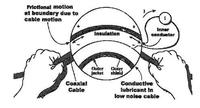
As sources of renewable energy, sun and wind have one major disadvantage: it is not always sunny or windy. Waves in the ocean, on the other hand, are never still. Researchers are now aiming to use waves to produce energy by making use of contact electrification between a patterned plastic nanoarray and water.
-
-
Research investments, growing markets drive rise in energy patents

Innovation in energy technology is booming, according to a new paper which examines what factors set the pace for energy innovation. The study finds that investments in research and development, as well as in the growth of markets for these products, have helped to spur this dramatic growth in innovation.
-
-
Radioactive shale gas contaminants seep into a Pennsylvania creek
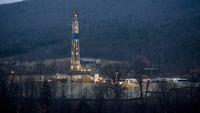
Researchers examined the quality of shale gas wastewater from hydraulic fracturing and the stream water above and below the disposal site in western Pennsylvania. Elevated levels of radioactivity, salts, and metals have been found in river water and sediments at a site where treated water from oil and gas operations is discharged into a creek.
-
-
Harnessing lightning power to charge a mobile phone
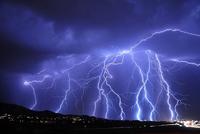
Scientists from the University of Southampton have collaborated with Nokia on ground-breaking, proof-of-concept research into harnessing the power of lightning for personal use, an industry first that could potentially see consumers tap one of nature’s significant energy sources to charge their devices in a sustainable manner.
-
-
Simulation show geothermal energy potential
Researchers in four countries are using an Idaho National Laboratory (INL) modeling program to simulate the subsurface physics important for geothermal energy extraction. The Fracturing and Liquid CONvection (FALCON) code enables simulation which is faster, simpler, and more comprehensive than previous options. It is helping researchers evaluate geothermal energy site data, and it may soon be able to offer predictions that could help improve geothermal energy output.
-
-
Fracking in Ohio: tapping a valuable resource or invading the environment?
A new study is examining methane and other components in groundwater wells, in advance of drilling for shale gas which is expected over the next several years in an Ohio region. A team of researchers spent a year doing periodic testing of groundwater wells in Carroll County, Ohio, a section of Ohio that sits along the shale-rich Pennsylvania-West Virginia borders. The study analyzed twenty-five groundwater wells at varying distances from proposed fracking sites in the rural, Appalachian, Utica Shale region of Carroll County.
-
-
Fracking does not cause quakes, but disposing water used in the process might: scientists
Researchers say that human activity associated with oil and gas production may sometimes cause earthquakes, but the problem lies in the disposal of drilling fluids in the underground injection wells, not hydraulic fracturing. The vast majority of injection wells do not cause quakes.
-
-
U.S. to face an increased risk of severe thunderstorms
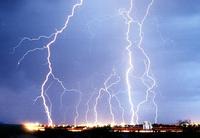
Severe thunderstorms, often exhibiting destructive rainfall, hail and tornadoes, are one of the primary causes of catastrophic losses in the United States. In 2012, eleven weather disasters in the United States crossed the billion-dollar threshold in economic losses. Seven of those events were related to severe thunderstorms. New climate analyses indicate that global warming is likely to cause a robust increase in the conditions that produce these types of storms across much of the country over the next century.
-
-
Calculating emissions, costs of increased wind, solar in the West
New research quantifies the potential impacts of increasing wind and solar power generation on the operators of fossil-fueled power plants in the West. To accommodate higher amounts of wind and solar power on the electric grid, utilities must ramp down and ramp up or stop and start conventional generators more frequently to provide reliable power for their customers — a practice called cycling.
-
-
Missed opportunities to save water, energy
Water and wastewater managers are missing substantial opportunities to save energy and money, according to a new report.The report also identifies significant gaps in knowledge about the amount of water used to extract energy resources such as natural gas, oil, and coal, and to generate electricity.
-
-
Demonstrating bioenergy technology
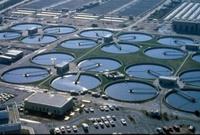
Researchers plan to demonstrate an innovative bioenergy technology that converts wastewater treatment plant byproducts into hydrogen gas to produce electricity. The demonstration project will start in mid-October, and in about a year the wastewater treatment plant will be processing one ton per day of wet biosolids and will be producing up to thirty kilowatts of electricity. The electricity, in turn, will be used to power select functions at the plant.
-
-
Extracting maximum energy from currents
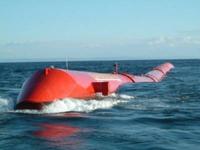
In the long sprint to find new sources of clean, low-cost power, slow and steady may win the race — the slow-moving water of currents and tides, that is. Just as wind turbines tap into the energy of flowing air to generate electricity, hydrokinetic devices produce power from moving masses of water.
-
-
World's first grid-scale isothermal compressed air energy storage system
A New Hampshire company has completed construction and begun startup of the world’s first megawatt-scale isothermal compressed air energy storage (ICAES) system. The system stores and returns megawatts of electricity to provide long-term grid stability and support integration of renewable energy sources like wind and solar. Unlike chemical battery systems, ICAES performance does not degrade over its lifetime or need frequent replacement. No hazardous materials are used.
-
-
Calculating the cost of a ton of mountaintop removal coal
To meet current U.S. coal demand through surface mining, an area of the Central Appalachians the size of Washington, D.C., would need to be mined every eighty-one days. This is about sixty-eight square miles — or roughly an area equal to ten city blocks mined every hour. A 1-year supply of coal would require converting about 310 square miles of the region’s mountains into surface mines.
-
-
Canada addresses environmental concerns over Keystone XL
Canadian prime minister Stephen Harper sent a letter to President Barack Obama last month offering to participate in joint efforts to reduce greenhouse-gas emissions in order to win approval of the Keystone XL Pipeline. Harper’s offer may allow Obama to approve the project without having to confront environmental groups.
-
More headlines
The long view
Strengthening the Grid’s ‘Backbone’ with Hydropower
By Michael Matz
Argonne-led studies investigate how hydropower could help add more clean energy to the grid, how it generates value as grids add more renewable energy, and how liner technology can improve hydropower efficiency.
LNG Exports Have Had No Impact on Domestic Energy Costs: Analysis
U.S. liquified natural gas (LNG) exports have not had any sustained and significant direct impact on U.S. natural gas prices and have, in fact, spurred production and productivity gains, which contribute to downward pressure on domestic prices.
